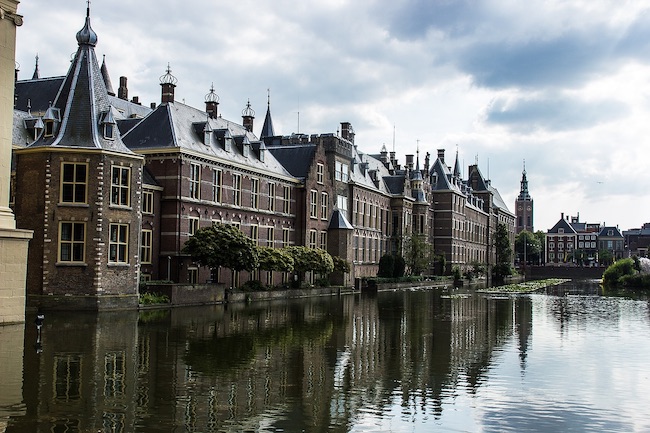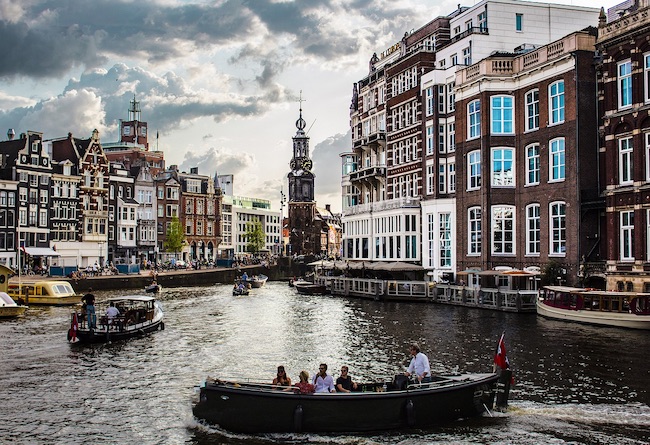Click on the map below to learn more
 |
AmsterdamOne of the first things that comes to mind when thinking about Amsterdam is its enchanting canal network. The city is often referred to as the "Venice of the North" due to its intricate system of canals that crisscross the urban landscape. These canals, lined with charming houses and crossed by countless bridges, create a scenic backdrop that is truly postcard-worthy. Exploring the city on foot, bicycle, or by boat along the canals is a delightful way to soak in the city's atmosphere and uncover hidden gems. Amsterdam is a city deeply rooted in history, and its architecture reflects its rich past. The city's iconic 17th-century canal houses, characterized by narrow facades and gabled roofs, stand as reminders of Amsterdam's Golden Age. Many of these houses have been transformed into museums, showcasing art, history, and the daily life of the city's inhabitants throughout the centuries. The Anne Frank House, Van Gogh Museum, and Rijksmuseum are just a few examples of the city's renowned cultural institutions. Art and creativity are integral parts of Amsterdam's identity. The city has been home to world-renowned artists like Rembrandt, Van Gogh, and Vermeer, and their works can be admired in the city's numerous museums and galleries. The Museumplein, a vibrant cultural square, is a hub for art enthusiasts, housing some of Amsterdam's most famous museums. Amsterdam's open-minded and progressive atmosphere sets it apart from many other cities. It is known for its tolerance, diverse communities, and liberal policies. The city embraces a vibrant and cosmopolitan vibe, attracting people from all walks of life. From its bustling markets and eclectic food scene to its vibrant nightlife and thriving music festivals, Amsterdam offers a wealth of experiences that cater to every taste and interest. Cycling is a way of life in Amsterdam, with more bikes than people in the city. The extensive network of bicycle paths and bike-friendly infrastructure makes it easy and enjoyable to explore the city on two wheels. Renting a bike and pedaling alongside the canals and through the charming neighborhoods is a quintessential Amsterdam experience. Amsterdam's appeal extends beyond its city limits, with nearby attractions such as the Keukenhof Gardens, famous for its vibrant tulip fields, and the historic windmills of Zaanse Schans, offering a glimpse into the country's rural heritage. |
|
|
|
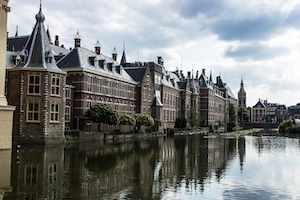 |
The Hague
One of the city's defining features is its status as the political capital of the Netherlands. The Dutch Parliament and the royal family's residence, Noordeinde Palace, are located in The Hague, making it the administrative heart of the country. The city's significance extends beyond national affairs, as it houses many international organizations, including the International Court of Justice, the International Criminal Court, and numerous embassies, solidifying its reputation as a global hub for justice, diplomacy, and peace. While The Hague is undoubtedly a center of power, it also boasts a rich cultural scene. The city's architecture showcases a diverse mix of styles, from medieval landmarks such as the Binnenhof, a complex of historic government buildings, to contemporary architectural wonders like the Peace Palace. Museums abound, with the Mauritshuis housing masterpieces by Vermeer and Rembrandt, and the Gemeentemuseum featuring a wide range of modern and contemporary art. In addition to its political and cultural significance, The Hague is also blessed with natural beauty. The city's location on the North Sea coast grants it access to stunning beaches, such as Scheveningen, a popular seaside resort with a lively promenade and a vibrant atmosphere. The nearby dunes and nature reserves provide ample opportunities for outdoor activities, from walking and cycling to picnicking and birdwatching.
|
|
|
|
 |
RotterdamRotterdam, the second-largest city in the Netherlands, is a dynamic and vibrant metropolis that embodies the spirit of innovation, resilience, and modernity. Situated on the banks of the river Maas, Rotterdam is renowned for its striking architecture, bustling port, and thriving cultural scene, making it a captivating destination for locals and visitors alike. One of Rotterdam's defining features is its architectural landscape, which sets it apart from other European cities. The city was heavily bombed during World War II, resulting in a blank canvas for architects and urban planners to reimagine the city's layout. As a result, Rotterdam boasts a remarkable collection of contemporary buildings and iconic landmarks that showcase cutting-edge design and creative vision. The Erasmus Bridge, the Euromast tower, and the Cube Houses are just a few examples of the city's architectural marvels that draw admiration from around the world. The port of Rotterdam, one of the largest and busiest ports in the world, has played a pivotal role in shaping the city's identity and economic success. Serving as a gateway to Europe, the port handles a vast amount of international trade and is a hub for shipping, logistics, and industry. Its impressive size and significance are best observed from the Euromast or during a boat tour along the river, providing a glimpse into Rotterdam's maritime heritage and global connectivity. Beyond its architectural wonders and bustling port, Rotterdam is also celebrated for its vibrant cultural scene. The city is home to a multitude of museums, art galleries, theaters, and music venues, offering a diverse range of cultural experiences. The Kunsthal Rotterdam, Museum Boijmans Van Beuningen, and the iconic Markthal are just a few of the venues that showcase art, history, and culinary delights.
|
|
|
|
 |
Groningen
One of the city's most notable features is its well-preserved historic center. Groningen's centuries-old buildings, including the Martinitoren (Martini Tower), provide a glimpse into the city's past. The Martinitoren, standing tall at 97 meters, offers breathtaking views of the city and is an iconic symbol of Groningen. Strolling through the narrow cobblestone streets, visitors can explore historic landmarks, charming squares, and cozy cafes, immersing themselves in the city's rich history and ambiance. Groningen is also known for its thriving cultural scene. The city is home to many museums, galleries, and theaters that cater to various artistic interests. The Groninger Museum, with its eye-catching modern architecture, houses an impressive collection of contemporary and classical art. The city's music venues, including the Oosterpoort and Vera, attract both local and international artists, making Groningen a hotspot for live performances and music festivals. The presence of the University of Groningen adds a youthful and vibrant energy to the city. With a large student population, Groningen offers a diverse range of activities and events. The Grote Markt, the central square, is a bustling hub of activity, surrounded by cafes, restaurants, and shops. The city's parks, such as Noorderplantsoen, provide a relaxing green space where locals and visitors can unwind and enjoy outdoor activities. Groningen's cycling culture is another defining aspect of the city. With an extensive network of bike paths and bike-friendly infrastructure, cycling is the preferred mode of transportation for many residents.
|
|
|
|
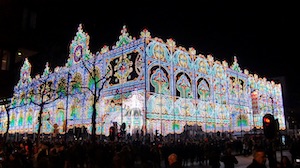 |
EindhovenEindhoven's transformation from a modest industrial town to a thriving technology and design center is remarkable. The city has embraced its legacy as a hub for innovation, fostering a climate that encourages entrepreneurship and creativity. The High Tech Campus Eindhoven, a renowned technology hub, is a testament to the city's commitment to technological advancement. It brings together businesses, research institutions, and startups, fostering collaboration and driving innovation in fields such as electronics, automotive, and sustainable energy. Design is another pillar of Eindhoven's identity. The city is home to the Design Academy Eindhoven, one of the most prestigious design schools in the world. Design aficionados can explore the city's creative side by visiting the Van Abbemuseum, which showcases contemporary art and design, or by taking a stroll along the Design Route, where innovative design concepts are integrated into the urban landscape. Eindhoven's progressive mindset is also evident in its sustainable initiatives. The city has implemented numerous environmentally friendly projects, including smart lighting systems, electric mobility solutions, and sustainable urban development plans. The Strijp-S district, a former Philips industrial site, has been transformed into a sustainable urban area that combines residential, commercial, and cultural spaces, creating a vibrant and sustainable community. Despite its modern focus, Eindhoven has not forgotten its cultural heritage. The city's industrial past is preserved in historic sites such as the Philips Museum, which offers insights into the company's history and impact on Eindhoven. The Stratumseind, one of the longest pub streets in the Netherlands, is a vibrant nightlife destination where locals and visitors can enjoy a drink or live music performances. Eindhoven's commitment to innovation and design is also reflected in its annual events. The Dutch Design Week, one of the largest design events in Europe, showcases the latest design trends and innovations, attracting professionals and enthusiasts from around the world. The GLOW festival, a mesmerizing light art festival, illuminates the city with stunning light installations, transforming Eindhoven into a magical wonderland. |
|
|
|
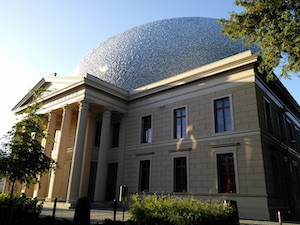 |
ZwolleLocated in the heart of the Netherlands, Zwolle is known for its well-preserved medieval architecture, beautiful canals, and cultural attractions. One of the city's most notable features is its historic center, which showcases a wealth of architectural gems. The Sassenpoort, a magnificent 15th-century gatehouse, stands as a testament to Zwolle's past as a prosperous trading city. The Grote Kerk (Great Church) with its towering spire and the Stadhuis (City Hall) are other notable landmarks that reflect the city's rich history. Exploring Zwolle's narrow cobblestone streets and winding canals is like stepping back in time. The city's historic buildings have been painstakingly preserved, creating a picturesque and setting. Visitors can take leisurely walks along the canals, admiring the charming facades and enjoying the serene ambiance. Boat tours along the canals offer a unique perspective of the city, providing a leisurely way to take in the sights and learn about Zwolle's history. Zwolle is also a city of culture and creativity. The Museum de Fundatie, located in a striking neoclassical building, houses an impressive collection of modern and contemporary art. The Waanders in de Broeren, a former church transformed into a stunning bookstore, is a haven for book lovers.
|
|
|
|
 |
UtrechtOne of Utrecht's most iconic landmarks is the Dom Tower, the tallest church tower in the Netherlands. Standing at an impressive 112 meters, the tower offers breathtaking panoramic views of the city and its surroundings. The adjacent Dom Square is a bustling hub where locals and tourists gather to soak in the historic ambiance and admire the beautifully preserved buildings. Utrecht's unique character is shaped by its intricate canal system, reminiscent of Amsterdam's famous canals. Strolling along the waterways and crossing the quaint bridges reveals hidden courtyards, charming cafes, and boutique shops. The picturesque Oudegracht, lined with historic wharf cellars and vibrant terraces, is a particularly enchanting spot to explore. Visitors can also take a relaxing boat tour to discover Utrecht's hidden gems from the water. The city's cultural scene is vibrant and diverse, with a range of museums, galleries, and theaters to explore. The Centraal Museum, located in a stunning Gothic building, showcases a wide array of art and historical artifacts, including works by local artists and exhibitions that delve into Utrecht's past. The TivoliVredenburg, a modern music venue, hosts a variety of concerts, from classical to contemporary, attracting both local and international talent. Utrecht's lively atmosphere is heightened by its thriving student population. The city is home to Utrecht University, one of the oldest and most prestigious universities in the Netherlands. This influx of young minds infuses the city with energy, creativity, and a vibrant nightlife. The streets are lined with bustling cafes, trendy bars, and cozy pubs, where visitors can mingle with locals and experience Utrecht's dynamic social scene. Utrecht's central location within the Netherlands makes it an ideal base for exploring the rest of the country. Its well-connected train station offers easy access to other major cities like Amsterdam, Rotterdam, and The Hague, allowing visitors to embark on exciting day trips and explore the diverse landscapes of the Netherlands. |
 |
Lek River
|
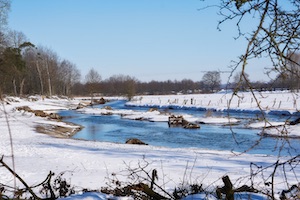 |
Neder Rijn River (Lower Rhine)
|
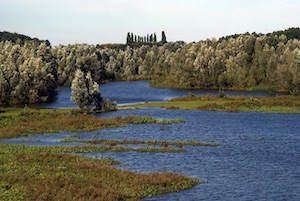 |
IJssel River
|
The Hague |
|
| Population: | 17,500,000 |
| Area: | 16,040 sq. miles |
| Capital City: | Amsterdam (seat of government, however, is the Hague) |
| Largest City: | Amsterdam |
| Currency: | Euro |
| Official Language: | Dutch |
| GDP (Gross Domestic Product) | $1.02 trillion (15th) |
| Back to Map | |
Amsterdam |
|
Back to Map |
|
 |
|
Netherlands fought for independence from Spanish rule during the Eighty Years' War. The design of the flag was inspired by the Prince's Flag, a naval banner used by William of Orange, the leader of the Dutch revolt against Spanish dominance. Over time, the flag evolved into its current tricolor form, and it was officially adopted as the national flag in 1937. Each color in the Dutch flag holds meaning and represents important aspects of Dutch history and values. The top red stripe symbolizes courage, determination, and resilience, paying homage to the Dutch people's fighting spirit throughout their history. The white stripe represents peace, purity, and integrity, reflecting the country's commitment to diplomacy and harmony. The blue stripe signifies loyalty, loyalty to the Dutch royal family, as well as the nation's steadfastness and dedication to its ideals. |
|

